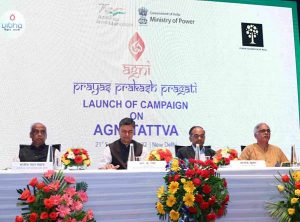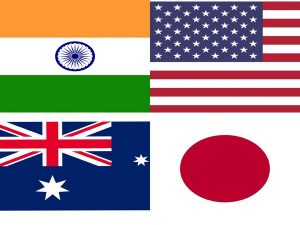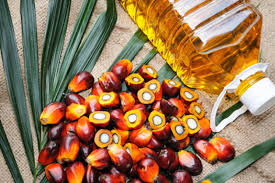Today Current Affairs: 26th September 2022 for UPSC IAS exams, State PSC exams, SSC CGL, State SSC, RRB, Railways, Banking Exam & IBPS, etc
Table of Contents
Child Mortality Rates:

In a significant milestone, India has achieved landmark achievement in further reduction of child mortality rates.
- As per the Sample Registration System (SRS) Statistical Report 2020 released on 22nd September 2022 by Registrar General of India (RGI), the country has been witnessing a progressive reduction in IMR, U5MR and NMR since 2014 towards achieving the Sustainable Development Goals (SDG) targets by 2030.
- Under 5 Mortality Rate (U5MR) for the country has shown significant decline of 3 points (Annual Decline Rate: 8.6%) from 2019 (32 per 1000 live births in 2020 against 35 per 1000 live births in 2019).
- It varies from 36 in rural areas to 21 in urban areas.
- Infant Mortality Rate (IMR) has also registered 2-point decline to 28 per 1000 live births in 2020 from 30 per 1000 live births in 2019 (Annual Decline Rate: 6.7%).
- The Rural-Urban difference has narrowed to 12 points (Urban 19, Rural-31).
- Neonatal Mortality Rate has also declined by 2 points from 22 per 1000 live births in 2019 to 20 per 1000 live births in 2020 (Annual Decline Rate: 9.1%). It ranges from 12 in urban areas to 23 in rural areas.
Carbon Dating:

A district court in Varanasi allowed a petition seeking carbon dating of the structure inside the Gyanvapi mosque that the Hindu side has claimed is a ‘Shivling’.
- Carbon dating is a widely-used method applied to establish the age of organic material, things that were once living.
- Living things have carbon in them in various forms.
- The dating method makes use of the fact that a particular isotope of carbon called C-14, with an atomic mass of 14, is radioactive, and decays at a rate that is well known.
- Carbon-14 is radioactive and reduces to one-half of itself in about 5,730 years.
- This is what is known as its ‘half-life’.
- Because plants and animals get their carbon from the atmosphere, they too acquire carbon-12 and carbon-14 isotopes in roughly the same proportion as is available in the atmosphere.
- So, after a plant or animal dies, the ratio of carbon-12 to carbon-14 in the body, or its remains, begins to change.
- This change can be measured and can be used to deduce the approximate time when the organism died.
International Day Of Sign Languages:

Indian Sign Language Research and Training Centre, an autonomous body under the Department of Empowerment of Persons with Disabilities, celebrated ‘Sign Language Day’.
- International Day of Sign Languages (IDSL) is celebrated annually across the world on 23 September.
- This year’s theme was “Sign Language Unite Us.”
- Objective of this day is to protect the linguistic identity and cultural diversity of all deaf people and other sign language users.
- ISLRTC launched the Indian Sign Language Dictionary (ISL Dictionary) in 2021 which is being used by deaf people, special teachers, parents of deaf children, linguists etc.
- To make this ISL dictionary easily accessible, ISLRTC along with Federal Institute of Science and Technology (FISAT), Kerala has developed an Indian Sign Language Dictionary APP known as ‘Sign Learn’.
Agni Tattva – Energy For LiFE Campaign:

The Union Minister of Power and New & Renewable Energy launched the Agni Tattva – Energy for LiFE campaign, to create awareness of the core concept of Agni Tattva, an element that is synonymous with energy and is amongst the five elements of Panchmahabhoot.
- The Panchmahabhoot comprises of Earth (Prithvi), Water (Jal), Fire (Agni), Air (Vayu) and Aether/ Space (Aakash).
- Agni Tattva Campaign would provide a platform to deliberate upon the learning and experiences of subject experts and specialists and explore solutions for a sustainable future for all.
- Further, it will cover several important topics focusing on health, transport, consumption and production, security, environment, and spirituality.
- The idea of LiFE was introduced by India during the 26th United Nations Climate Change Conference of the Parties (COP26) in Glasgow in 2021.
- The idea promotes an environmentally conscious lifestyle that focuses on ‘mindful and deliberate utilisation’ instead of ‘mindless and wasteful consumption.
- With the launch of the Mission, the prevalent “use-and-dispose” economy governed by mindless and destructive consumption will be replaced by a circular economy, defined by conscious and deliberate consumption.
- It seeks to leverage the strength of social networks to influence social norms surrounding climate.
- The Mission plans to create and nurture a global network of individuals, namely ‘Pro-Planet People’ (P3).
- P3 will have a shared commitment to adopt and promote environmentally friendly lifestyles.
- Through the P3 community, the Mission seeks to create an ecosystem that will reinforce and enable environmentally friendly behaviours to be self-sustainable.
Quad Grouping:

Foreign Ministers of the Quad group of countries – India, the U.S., Australia, and Japan – met on the fringes of the United Nations General Assembly (UNGA) to sign a Humanitarian Assistance and Disaster Relief (HADR) partnership into effect.
- Under the HADR, the member countries will coordinate their disaster response operations in the Indo-Pacific region with other National and International agencies, private non-governmental organizations.
- QUAD is the grouping of four democracies –India, Australia, the US, and Japan.
- All four nations find a common ground of being democratic nations and also support the common interest of unhindered maritime trade and security.
- It aims to ensure and support a “free, open and prosperous” Indo-Pacific region.
- The idea of Quad was first mooted by Japanese Prime Minister Shinzo Abe in 2007.
- However, the idea couldn’t move ahead with Australia pulling out of it, apparently due to Chinese pressure.
- Finally in 2017, India, Australia, the US and Japan, came together and formed this “quadrilateral” coalition.
Banking System Liquidity:

For the first time since May 2019, the banking system liquidity situation turned into a deficit mode of Rs 21,873.4 crore on September 20, 2022.
- Liquidity in the banking system refers to readily available cash that banks need to meet short-term business and financial needs.
- On a given day, if the banking system is a net borrower from the RBI under Liquidity Adjustment Facility (LAF), the system liquidity can be said to be in deficit and if the banking system is a net lender to the RBI, the system liquidity can be said to be in surplus.
- The LAF refers to the RBI’s operations through which it injects or absorbs liquidity into or from the banking system.
- Economists say that there are various factors over the last few months that have led to the current situation.
- If an improvement in demand for credit has led to the same, the recent advance tax outflow, which is a quarterly phenomenon, has further aggravated the situation.
- Besides, there is the continuous intervention of the RBI to stem the fall in the rupee against the US dollar.
G-4 Meeting:

On the sidelines of the 76th session of the UN General Assembly, the G-4 countries highlight ‘urgent need’ for reform in U.N. Security Council (UNSC).
- The G4 is a grouping of Brazil, Germany, India and Japan which are aspiring to become permanent members of the UNSC.
- The G4 countries are supporting each other’s bids for permanent membership of the UNSC.
- The G4 nations traditionally meet on the sidelines of the annual high-level UN General Assembly session.
Key Highlights of the G-4 Meeting:
- They reiterated their support for African countries being represented in a permanent and non-permanent capacity.
- The Ministers agreed on the need for enhanced role and presence of developing countries and of major contributors to the United Nations to enhance the capacity of the Council to respond effectively to the complex and evolving challenges on questions of international peace and security.
Aliva Program To Eradicate Child Marriage:

With the aim of eradicating child marriage, Nayagarh, a tiny Odisha district, has adopted a unique initiative by scrupulously recording information on all adolescent girls in the district.
- From birth registration date to Aadhaar number, from family details to skill training, information of 48,642 adolescent girls can be found in registers named Aliva.
- Nayagarh, with a population of 9,62,789, has a skewed sex ratio at 855. Child marriages the district are still considered a part of their social life.
- Observing that child marriages are solemnised in the age group of 14-19 and dropouts among girls’ students continued to be high, the district administration launched the Aliva programme in January this year.
- Anganwadi workers had been asked to identify every adolescent girl in their jurisdiction and keep tabs on them.
- There are 1,584 registers available in 1,584 Anganwadi centres of the district.
Asian Palm Oil Alliance (APOA):

The apex edible oil industry associations from five major palm oil importing countries of Asia — India, Pakistan, Sri Lanka, Bangladesh and Nepal have come together to form the Asian Palm Oil Alliance (APOA).
- APOA held its first general body meeting on the sidelines of the Globoil Summit being held at Agra, India and the next meeting is expected to be held in Indonesia early next year 2023.
- Globoil Summit is one of the World’s Leading Edible Oils and Agri Trade Conference, Exhibitions & Awards.
2022 also marks the 25th year celebration of Globoil India. - The APOA aims is safeguarding the economic and business interests of the palm oil consuming countries and will work towards increasing the consumption of palm oil in member countries.
- The alliance would work towards ensuring that palm oil is recognised as a high-quality, economical, and healthy vegetable oil and to change the negative image of palm oil.
- Membership of APOA would be further expanded to include companies or industry bodies associated with production or refining of palm oil across the continent.
- Palm oil is currently the world’s most consumed vegetable oil.
- It is used extensively in the production of detergents, plastics, cosmetics, and biofuels.
- Indonesia and Malaysia together account for almost 90% of the global palm oil production, with Indonesia producing the largest quantity at over 45 million tonnes in 2021.
- Top consumers of the commodity are India, China, and the European Union (EU).
- India’s annual imports of edible oil is around 13-14 million tonne (MT).
- Around 8 MT of palm oil is imported from Indonesia and Malaysia, while other oils, such as soya and sunflower, come from Argentina, Brazil, Ukraine and Russia.
- Asia accounts for around 40% of the global palm oil consumption while Europe accounts for 12% of palm oil trade. Indonesia and Malaysia are the biggest palm oil exporters in the world.
- India is the largest importer of palm oil in Asia, accounting for 15% of global imports, followed by China (9%), Pakistan (4%) and Bangladesh (2%).
Rural Electrification Corporation : Maharatna Status

Rural Electrification Corporation (REC) has been accorded the status of a ‘Maharatna’ Central Public Sector Enterprise (CPSE).
- REC is a Non-Banking Financial Company (NBFC), incorporated in 1969, focusing on Power Sector Financing and Development across India.
- It comes under the purview of the Ministry of Power.
- It has been appointed as a Nodal Agency for Government of India’s flagship schemes as following:
- Pradhan Mantri Sahaj Bijli Har Ghar Yojana (SAUBHAGAYA)
- Deen Dayal Upadhaya Gram Jyoti Yojana (DDUGJY)
- National Electricity Fund (NEF)
- REC also assists the Ministry of Power in monitoring the Ujjwal Discom Assurance Yojana (UDAY).
- The Board of a ‘Maharatna’ CPSE can make equity investments to undertake financial joint ventures and wholly-owned subsidiaries and undertake mergers and acquisitions in India and abroad, subject to a ceiling of 15% of the Net Worth of the concerned CPSE, limited to ₹5,000 crores in one project.
- The Board can also structure and implement schemes relating to personnel and Human Resource Management and Training.
- REC now can also enter into technology Joint Ventures or other strategic alliances among others.




